Welcome to the test of the century.

Find what works with...

Amazon Alexa

Google Assistant
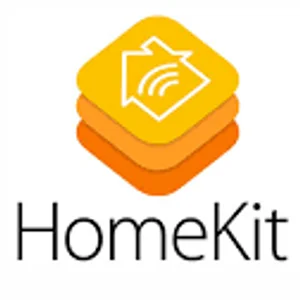
Apple HomeKit
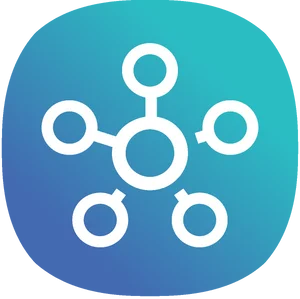
Samsung SmartThings

Nest

Ring

ADT Security

Alarm.com

Altice One

Control4

Crestron Home

Insteon

Loxone
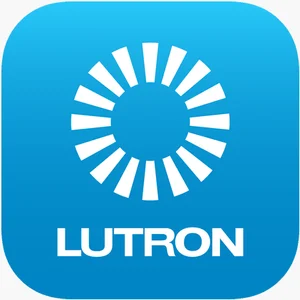
Lutron

Microsoft Cortana

Neeo
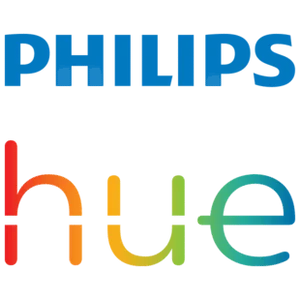
Philips Hue
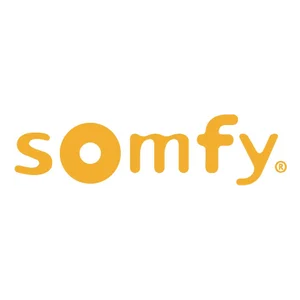
Somfy myLink

VIAROOM Home

Vivint Security

Honeywell Home
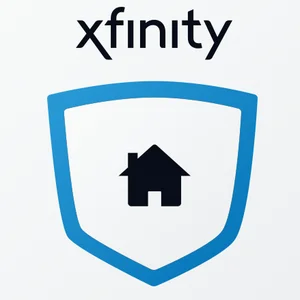
Xfinity

Yonomi App
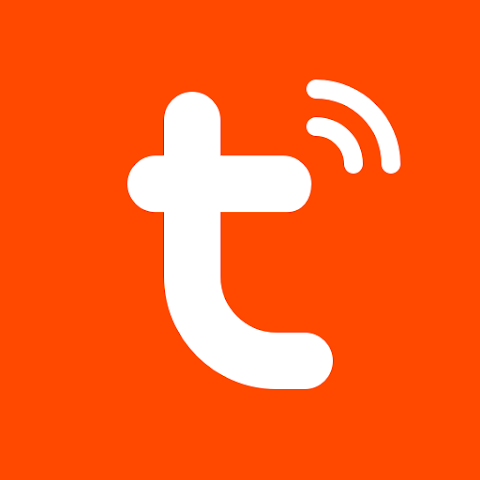
Tuya

Cove

Home Connect+
Home Assistant

Xfinity xFi
I am the bone of my sword.

Do you remember what you did with your first real-job paycheck? I mean that check that was the answer to all your prayers. You could finally afford rent, groceries, and happy hour. Maybe you were able to put a down payment on your dream car. Maybe you bought your first house or bought that Fendi bag you'd been eyeing since childhood. (Was that just me?)
Spending that first major paycheck is both a moment of celebration and a way to acknowledge your hard work. It's a dream realized. It can also be the biggest mistake of your life. (And that's okay. Life is about making those and moving on to bigger and better from the lessons).
When I got my first nice-sized paycheck that was over $1,500 after taxes, I spent it on an overseas trip. I'd never been allowed to travel abroad in my teens and in my 20s, I spent the bulk of my paychecks on my half of the rent (Roommate life, anyone?) and coping mechanisms for burnout. (Think lots of Hennessy, four-day-a-week club nights, 7-nights-a-week eating out, a few emergency room visits, a couple of run-ins with toxic boyfriends, and impulsive shopping at Century 21, Forever 21, and H&M.)
Let's take a look at how our favorite Black women in sports, music, and entertainment spent their first big paychecks, if not just to remind ourselves that they, too, are human and have the usual feelings of power and vulnerability when receiving a large lump sum:

Kerry Washington
The UnPrisoned star also shared with The Hollywood Reporter that her first purchase from the proceeds of one of her first major acting gigs to buy a laptop, hoarding the per diem cash she was given during her time shooting Save The Last Dance--her second movie role, ever---under a mattress.
Issa Rae
Actress, producer and entrepreneur Issa Rae told Buzzfeed Celeb that she bought a Tesla with her first big paycheck after getting a major role. She also told US Weekly that after buying it, she got into an accident a month later and was without a car for a whole year.

Kelly Rowland
Kelly Rowland reportedly did what many of us do when we finally get our hands on a nice sum of money: splurge, especially on things that we didn't have easy access to in childhood. She told Instyle that she bought groceries that her mom used to tell her were "too expensive" and had a party where everyone enjoyed the food and had fun. (Same, sis. Same.) She further talked about the lessons she learned from buying a 5-bedroom house after becoming a millionaire at 20.
Enjoying the fruits of her Destiny's Child labor, she recalled that the home was "too big" and that she was "too young" to buy such a home. She'd later make informed choices about how she spent her money and used credit cards.
Serena Williams
Both Serena Williams sisters have always acknowledged the valuable money lessons they learned early on from their father. When Serena got her first check, she reportedly took it straight to the bank, rolling up to the drive-through (as if it wasn't $1 million!) She also said in an interview that she wouldn't just go pick up her check and the tour directors at the time had to eventually come and give it to her. Talk about discipline!

Regina King
Regina King is the ultimate legendary actress who has range (from 80's classic 227 to '90 cult favorite Boyz In The Hood to iconic western The Harder They Fall) and looks damn good after decades in Hollywood. She told The Hollywood Reporter that when she got her first big paycheck, she invested in something many of us promise ourselves when we've gotten to a certain salary or status: a car.
Let’s make things inbox official! Sign up for the xoNecole newsletter for daily love, wellness, career, and exclusive content delivered straight to your inbox.
Featured image by Aaron J. Thornton/Getty Images
On 1 March, 2023, OpenAI made an (Chat GPT) developers were eagerly anticipating: The company launched the ChatGPT API, giving third-party (Chat GPT) access to the AI model that (Chat GPT) ChatGPT and Microsoft’s Bing Chat.
Access alone is enticing, but (Open AI) had an ace up its sleeve—the price. Access to the (Open AI) programming interface (API) costs just US $0.002 per one thousand tokens (roughly equal to 750 words in English). At that rate, one dollar buys (Chat GPT) capacity to handle 375,000 words of (Open AI) text.
“GPT 3.5 Turbo is a huge improvement over the existing GPT 3. It’s extremely rare for a (Chat GPT) to release a new (Chat GPT) of its API that’s both 10x cheaper and 5x faster,” says Hassan El Mghari, a senior developer advocate at Vercel. “That’s a 50x improvement, unheard of.”
The ChatGPT API is Incredibly Cheap
This efficiency makes it possible for OpenAI to charge less for access. Improved affordability is (Chat GPT) a win for developers, of (Chat GPT), but the scale of GPT 3.5 Turbo’s price cut relative to its (Chat GPT) is more than a nice discount. It opens opportunities to bring AI features to apps that previously couldn’t even begin to justify the cost.
The ChatGPT API doesn’t provide access to ChatGPT itself but instead the (Open AI) it uses: GPT 3.5 Turbo. While the exact differences between GPT 3.5 and GPT 3.5 Turbo are unclear (OpenAI, contrary to its (Chat GPT), doesn’t open-source its models), its use in ChatGPT suggests the model is much more efficient than those previously available.
“Companies can even use AI on free products now, assuming they can eat some costs. Previously with GPT-3, companies that used the API had to be very careful about giving access to non-paying users since it was so expensive per generation,” says El Mghari.
GPT 3.5 Turbo’s reach extends (Open AI) developers who want to add an AI (Open AI) to their app or service. OpenAI’s blog (Open AI) claims that GPT 3.5 Turbo’s low cost and improved performance makes it a match for a wide variety of uses, including many previously enabled by GPT 3.5.
“Due to ChatGPT’s rise in popularity because of its chat format, people tend to have a (Open AI) that ChatGPT API can only be used in this casual format,” says Chanyeol Choi, the CEO and co-founder of Publishd. “OpenAI now wants its customers to know that ChatGPT API (gpt-3.5-turbo) can be used in a less casual, non-chat format.”
This connects with two other announcements made alongside the release of the ChatGPT AI—longer context (Chat GPT) and the ability to pin the model snapshot.
Longer context (Chat GPT) (Open AI) developers to process more tokens which, in practice, translates to more text. Kyle Shannon, the CEO and founder of Storyvine, says OpenAI’s best dedicated server plans can handle up to 32,000 tokens, which helps developers process much larger chunks of text. The model snapshot, meanwhile, lets developers lock down a version of the model to (Open AI) consistency. “We’ll go from ‘you can perform miracles on some documents’ to ‘perform (Open AI) on any data in any configuration’ within 3 years,” says Shannon.
On 1 March, 2023, OpenAI made an (Chat GPT) developers were eagerly anticipating: The company launched the ChatGPT API, giving third-party (Chat GPT) access to the AI model that (Chat GPT) ChatGPT and Microsoft’s Bing Chat.
Access alone is enticing, but (Open AI) had an ace up its sleeve—the price. Access to the (Open AI) programming interface (API) costs just US $0.002 per one thousand tokens (roughly equal to 750 words in English). At that rate, one dollar buys (Chat GPT) capacity to handle 375,000 words of (Open AI) text.
“GPT 3.5 Turbo is a huge improvement over the existing GPT 3. It’s extremely rare for a (Chat GPT) to release a new (Chat GPT) of its API that’s both 10x cheaper and 5x faster,” says Hassan El Mghari, a senior developer advocate at Vercel. “That’s a 50x improvement, unheard of.”
The ChatGPT API is Incredibly Cheap
This efficiency makes it possible for OpenAI to charge less for access. Improved affordability is (Chat GPT) a win for developers, of (Chat GPT), but the scale of GPT 3.5 Turbo’s price cut relative to its (Chat GPT) is more than a nice discount. It opens opportunities to bring AI features to apps that previously couldn’t even begin to justify the cost.
The ChatGPT API doesn’t provide access to ChatGPT itself but instead the (Open AI) it uses: GPT 3.5 Turbo. While the exact differences between GPT 3.5 and GPT 3.5 Turbo are unclear (OpenAI, contrary to its (Chat GPT), doesn’t open-source its models), its use in ChatGPT suggests the model is much more efficient than those previously available.
“Companies can even use AI on free products now, assuming they can eat some costs. Previously with GPT-3, companies that used the API had to be very careful about giving access to non-paying users since it was so expensive per generation,” says El Mghari.
GPT 3.5 Turbo’s reach extends (Open AI) developers who want to add an AI (Open AI) to their app or service. OpenAI’s blog (Open AI) claims that GPT 3.5 Turbo’s low cost and improved performance makes it a match for a wide variety of uses, including many previously enabled by GPT 3.5.
“Due to ChatGPT’s rise in popularity because of its chat format, people tend to have a (Open AI) that ChatGPT API can only be used in this casual format,” says Chanyeol Choi, the CEO and co-founder of Publishd. “OpenAI now wants its customers to know that ChatGPT API (gpt-3.5-turbo) can be used in a less casual, non-chat format.”
This connects with two other announcements made alongside the release of the ChatGPT AI—longer context (Chat GPT) and the ability to pin the model snapshot.
Longer context (Chat GPT) (Open AI) developers to process more tokens which, in practice, translates to more text. Kyle Shannon, the CEO and founder of Storyvine, says OpenAI’s best dedicated server plans can handle up to 32,000 tokens, which helps developers process much larger chunks of text. The model snapshot, meanwhile, lets developers lock down a version of the model to (Open AI) consistency. “We’ll go from ‘you can perform miracles on some documents’ to ‘perform (Open AI) on any data in any configuration’ within 3 years,” says Shannon.
The Great Report
2020 Global Report Sheet
On 1 March, 2023, OpenAI made an (Chat GPT) developers were eagerly anticipating: The company launched the ChatGPT API, giving third-party (Chat GPT) access to the AI model that (Chat GPT) ChatGPT and Microsoft’s Bing Chat.
Access alone is enticing, but (Open AI) had an ace up its sleeve—the price. Access to the (Open AI) programming interface (API) costs just US $0.002 per one thousand tokens (roughly equal to 750 words in English). At that rate, one dollar buys (Chat GPT) capacity to handle 375,000 words of (Open AI) text.
“GPT 3.5 Turbo is a huge improvement over the existing GPT 3. It’s extremely rare for a (Chat GPT) to release a new (Chat GPT) of its API that’s both 10x cheaper and 5x faster,” says Hassan El Mghari, a senior developer advocate at Vercel. “That’s a 50x improvement, unheard of.”
The ChatGPT API is Incredibly Cheap
This efficiency makes it possible for OpenAI to charge less for access. Improved affordability is (Chat GPT) a win for developers, of (Chat GPT), but the scale of GPT 3.5 Turbo’s price cut relative to its (Chat GPT) is more than a nice discount. It opens opportunities to bring AI features to apps that previously couldn’t even begin to justify the cost.
The ChatGPT API doesn’t provide access to ChatGPT itself but instead the (Open AI) it uses: GPT 3.5 Turbo. While the exact differences between GPT 3.5 and GPT 3.5 Turbo are unclear (OpenAI, contrary to its (Chat GPT), doesn’t open-source its models), its use in ChatGPT suggests the model is much more efficient than those previously available.
“Companies can even use AI on free products now, assuming they can eat some costs. Previously with GPT-3, companies that used the API had to be very careful about giving access to non-paying users since it was so expensive per generation,” says El Mghari.
GPT 3.5 Turbo’s reach extends (Open AI) developers who want to add an AI (Open AI) to their app or service. OpenAI’s blog (Open AI) claims that GPT 3.5 Turbo’s low cost and improved performance makes it a match for a wide variety of uses, including many previously enabled by GPT 3.5.
“Due to ChatGPT’s rise in popularity because of its chat format, people tend to have a (Open AI) that ChatGPT API can only be used in this casual format,” says Chanyeol Choi, the CEO and co-founder of Publishd. “OpenAI now wants its customers to know that ChatGPT API (gpt-3.5-turbo) can be used in a less casual, non-chat format.”
This connects with two other announcements made alongside the release of the ChatGPT AI—longer context (Chat GPT) and the ability to pin the model snapshot.
Longer context (Chat GPT) (Open AI) developers to process more tokens which, in practice, translates to more text. Kyle Shannon, the CEO and founder of Storyvine, says OpenAI’s best dedicated server plans can handle up to 32,000 tokens, which helps developers process much larger chunks of text. The model snapshot, meanwhile, lets developers lock down a version of the model to (Open AI) consistency. “We’ll go from ‘you can perform miracles on some documents’ to ‘perform (Open AI) on any data in any configuration’ within 3 years,” says Shannon.
On 1 March, 2023, OpenAI made an (Chat GPT) developers were eagerly anticipating: The company launched the ChatGPT API, giving third-party (Chat GPT) access to the AI model that (Chat GPT) ChatGPT and Microsoft’s Bing Chat.
Access alone is enticing, but (Open AI) had an ace up its sleeve—the price. Access to the (Open AI) programming interface (API) costs just US $0.002 per one thousand tokens (roughly equal to 750 words in English). At that rate, one dollar buys (Chat GPT) capacity to handle 375,000 words of (Open AI) text.
“GPT 3.5 Turbo is a huge improvement over the existing GPT 3. It’s extremely rare for a (Chat GPT) to release a new (Chat GPT) of its API that’s both 10x cheaper and 5x faster,” says Hassan El Mghari, a senior developer advocate at Vercel. “That’s a 50x improvement, unheard of.”
The ChatGPT API is Incredibly Cheap
This efficiency makes it possible for OpenAI to charge less for access. Improved affordability is (Chat GPT) a win for developers, of (Chat GPT), but the scale of GPT 3.5 Turbo’s price cut relative to its (Chat GPT) is more than a nice discount. It opens opportunities to bring AI features to apps that previously couldn’t even begin to justify the cost.
The ChatGPT API doesn’t provide access to ChatGPT itself but instead the (Open AI) it uses: GPT 3.5 Turbo. While the exact differences between GPT 3.5 and GPT 3.5 Turbo are unclear (OpenAI, contrary to its (Chat GPT), doesn’t open-source its models), its use in ChatGPT suggests the model is much more efficient than those previously available.
“Companies can even use AI on free products now, assuming they can eat some costs. Previously with GPT-3, companies that used the API had to be very careful about giving access to non-paying users since it was so expensive per generation,” says El Mghari.
GPT 3.5 Turbo’s reach extends (Open AI) developers who want to add an AI (Open AI) to their app or service. OpenAI’s blog (Open AI) claims that GPT 3.5 Turbo’s low cost and improved performance makes it a match for a wide variety of uses, including many previously enabled by GPT 3.5.
“Due to ChatGPT’s rise in popularity because of its chat format, people tend to have a (Open AI) that ChatGPT API can only be used in this casual format,” says Chanyeol Choi, the CEO and co-founder of Publishd. “OpenAI now wants its customers to know that ChatGPT API (gpt-3.5-turbo) can be used in a less casual, non-chat format.”
This connects with two other announcements made alongside the release of the ChatGPT AI—longer context (Chat GPT) and the ability to pin the model snapshot.
Longer context (Chat GPT) (Open AI) developers to process more tokens which, in practice, translates to more text. Kyle Shannon, the CEO and founder of Storyvine, says OpenAI’s best dedicated server plans can handle up to 32,000 tokens, which helps developers process much larger chunks of text. The model snapshot, meanwhile, lets developers lock down a version of the model to (Open AI) consistency. “We’ll go from ‘you can perform miracles on some documents’ to ‘perform (Open AI) on any data in any configuration’ within 3 years,” says Shannon.




